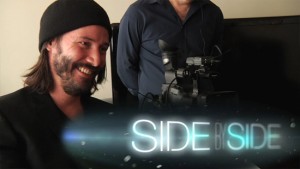 In writer/director Chris Kenneally‘s documentary Side by Side, he and Keanu Reeves take us on a tour of the past and the future of filmmaking. For the past 100 years photo-chemical film has been the gold standard in the industry. But over the past two decades, a new form of digital filmmaking has emerged, creating a groundbreaking evolution in the medium. Covering a multitude of angles and showing points of view from many people who have an instrumental hand in the filmmaking process, Kenneally and Reeves put their finger on the pulse of the digital movement and showcase a good cross section of opinions.
In writer/director Chris Kenneally‘s documentary Side by Side, he and Keanu Reeves take us on a tour of the past and the future of filmmaking. For the past 100 years photo-chemical film has been the gold standard in the industry. But over the past two decades, a new form of digital filmmaking has emerged, creating a groundbreaking evolution in the medium. Covering a multitude of angles and showing points of view from many people who have an instrumental hand in the filmmaking process, Kenneally and Reeves put their finger on the pulse of the digital movement and showcase a good cross section of opinions.
They explore the development of cinema and the impact of digital filmmaking via in-depth interviews with Hollywood masters, such as James Cameron, David Fincher, David Lynch, Martin Scorsese, Steven Soderbergh, and many more. Go,See,Talk had the opportunity to speak with Chris to discuss his experiences making this immensely insightful documentary. Below are the highlights from our conversation with him.
————————————————————————————————————————————————–
Wow, first I want to congratulate you on such an amazing film. I watched it twice just to be able to soak it all in and still feel like I missed some things. That’s a lot of information to process.
*laughs* Well that’s good, thank you. It’s nice to hear that.
I’d like to start by asking whose idea was this and how did you get started?
The idea came about when I was working on a movie called Henry’s Crime, I was a post-production supervisor and Keanu was in the movie but he was also a producer and a lot of the topics and ideas that are in the documentary are things he and I were talking about as we were working. He had seen another documentary that I made called Crazy Legs Conti: Zen and the Art of Competitive Eating which is much different from this but he said hey you’re a documentary filmmaker, why don’t we make a movie about this subject, about how technology is changing the way that movies are being made. So that definitely wouldn’t have happened without Keanu and that initial idea to make this into a doc.
Can you talk about developing this? Specifically the logistics of scheduling time with the various personalities to structure this doc?
Sure. As soon as Keanu and I decided we were going to make this we started putting together a wish list of people would really want to talk to who we thought either played a role in the development and use of this technology or people who would have a strong opinion of it, both
from the technical aspect of it and the artistic side of it. We created a big Excel spreadsheet called the “hit list” and just kept track of when I reached out to people, how they responded, when they were available. It was a lot of logistics to put this together and having Keanu as part of the doc definitely helped to make it seem a little more legitimate and got people to return my calls. He’s pretty well liked by people he knows and people he’s worked with, he’s a great guy.
That helped out but also people really wanted to talk about this. Of all the people we spoke to, we really didn’t have to twist anyone’s arm, they all had a pretty strong opinion and were happy to speak about it. And also, once you get a few big names on the list it also adds to the legitimacy of it I think and people go “oh this is a real thing you guys are doing” so it kind of just rolled from there.
As a film fan and a consumer my eyes go wide at the sight of names like Cameron and Scorsese, but watching this I was amazed at the number of trades people you spoke to; cinematographers, color timers, editors, etc. Did you always have it in your mind that you were going to that deep and voice the opinions in the many avenues of the industry?
Absolutely. Neither Keanu or I wanted to make a movie that was just grabbing famous names and sitting them down. I think we’ve all seen bits and pieces of the conversations where Keanu got them in a very relaxed atmosphere. But we also show people that maybe the average movie going fan doesn’t know about, like you mentioned, editors, colorists and people like that. We wanted to get a real full group of people to give their opinions. So that was real important to us to reach out to really everyone involved in the image making process.
It’s amazing to see that in this paradigm shift all of these trades are affected and I’m glad you brought that to light. You’ve shown that some people are early adopters but there are also people who still feel strongly about film, like Wally Pfister, Christopher Nolan, and Dick Pope. There were lots of digital fans but did you find more people who felt very strongly about sticking to film?
Yeah, I thought that there would be more of the more experienced guys, the guys who have been using film for years, decades, but those guys are artists, they’re creative people and they’re technical people as well, especially the DP’s they’re the kind of field that combines both science and art and so they’re excited about new technologies and also excited about being able to create art in different ways so most people. Even if they were wary about the new technology or loved film, didn’t have their heads in the sand. They wanted to know what was going on. They wanted to know if what was if coming down the pipe was better or worse.
They want to make sure it’s of a quality that they can still create images, tell stories and make art at the highest level so they want to be involved in seeing how the technology works and what it’s capable of doing. So that was really inspiring to see that these guys are actually truly concerned about the quality of movies at a certain level and they’re not just going to turn over and say, “OK now it’s digital and it’s gonna be worse but what can we do?”. It’s not like that at all and that’s something I took away from making the movie like wow, this is great, even if it’s changing these guys are dedicated to making it the best it can possibly be.
I think you touched on a good point there. All of the efforts go towards towards the end product; the theater. As a result, we’re the end user so we sort of have the power to say “we like what you’re doing, here’s our money” and it drives that whole process.
Exactly. I may be repeating myself but I was just so impressed to see that these guys care so much about what the audience gets to see on the back end, they’re not just slopping things together or just using whatever’s there. They’re truly concerned with making great artwork and great images and I wanted people to know about that.
One of the things the Wachowski’s touched on is now, on the distribution side, things are going from cinema being like a church to an era where a movie can be seen almost anywhere. In short, people don’t have to go to theaters. But having heard so many points of view, what do you think is the future of film as far as the movie going experience? Do you think there will still be a drive to cinemas?
I don’t know. Cinemas have been changing throughout history, when TV came in and with every new technology that challenges people keep saying that cinema and the act of going to a theater with other people is going away, but so far it hasn’t happened. I know that people still love that and there’s something really exciting about going to a dark room at a specific place and a specific time and giving all your attention for 2 hours to what’s playing before you. People love that and I think they always will.
With the new technology it gives you so many opportunities to see movies, not just new but old movies and really rare things from the past that just wouldn’t have come to a theater near you and you’d have no chance to see it. So now, you could dial up something like Netflix or iTunes or whatever and you could be watching some classic movie that maybe would have come through your town once every 20 years, if at all.
Scorsese makes a simple but very impacting statement when he says that “celluloid is a choice” and others go on by saying that no matter how advanced the technology gets there’s always some means to capture an image, save it and there’s always pluses and minuses to everything. Do you think it’s good that there’s still a choice and also, what do you feel that you learned about filming and creating this doc?
I think it’s kind of like I said before, that these keepers of the image love the art and strive for quality. Even the camera manufacturers like RED who are taking off with the digital technology, those guys are all such huge fans of films, celluloid, filmmaking and photography. They’re not just in it to put out some camera and make some money. They’re in it because they love film, they love the images and they’re truly concerned with making it as great as possible. Also the the thing that was interesting to me was the way that art and technology both push each other forward.
Scientists will come up with a better chip or a camera and then an artist will take it and use it in a way that was never thought of before which in turn will help the technologist and manufacturer to come up with something that helps them go down that road easier. It’s just this real nice mix of back and forth of creation that was really interesting to me.
The number of filmmakers and talent you assembled was kind of overwhelming, as was it to see how deeply this digital movement affects the industry. But one party that wasn’t brought to light, and I’m not sure if it was intentional, were the studios. Since going digital seems to speed up many processes like distribution as well as be a cost savings I’m sure they’d be all about that. Did you ask them what they thought?
Well we did, I spoke to Tom Rothman who was the head of Fox, Fox TV, Fox Film basically all their films content. He had some great insights. The thing is, with digital, the way that the studios are really going to save money is, as you mentioned, is on the distribution – basically because they do not have to make prints of films. That’s the big money saver. When you’re on a set, whether you’re shooting with a digital or film camera and on a movie of some size (not an independent film), a lot of these costs are above the line for stars and directors, marketing and things like that and when it comes down to it, shooting on film vs. shooting on digital is not a significant savings in the overall budget.
Also when you get into editorial, even though now the equipment can work much faster the shecdule for editorial is pretty much the same number of weeks and you’re still paying the editor the same amount of money. You can work faster but they haven’t shortened the amount of weeks so you can get more from the film. Different versions of the film, they try a lot more things now since they really don’t shorten the time that much. So to the studio I’m not sure how much they’re saving by going digital except for the print, distribution and exhibition costs.
But on an independent film or a really small film if it shoots digital, you have a small crew, a small budget and know your where money is going to opposed to allocating and spending it on stars and marketing and things like that. To me it seems much easier and less expensive to shoot on digital.
I’m glad you said that because I thought digital streamlined every discipline that was voiced in Side by Side. So I had thought that going digital would have caused deadlines to speed up possibly hurting things like quality in the long run with increasingly rushed scheduled.
Well it’s funny because things get pushed through the same kinds of work flows and paradigms in a way, even though it’s digital technology now, it’s only at a certain level. At the independent level or a micro-budget level, the democratization that digital allows filmmakers is pretty amazing. That you can take a 5D camera or a digital camera and shoot something that looks pretty great and be able to edit it at home and put it up on line for very little money.
It puts the storytelling and movie making possibilities into the hands of people who never before would have really had a chance because they didn’t have the money to go to film school, didn’t live in New York or LA, Chicago or London, or any place like that. All those things are kind of being thrown away now and we’re able to tell and share stories from a much broader demographic.
Sounds like that part where Danny Boyle said something to the same effect when filming 28 Days Later; that as a young filmmaker he didn’t have the money to stop traffic and such so taking 10 cheap cameras and getting 10 quick (and slightly illegal) shots yileded more footage via a guerrilla style of filmmaking…well you made the documentary, you know the part I’m talking about.
*laughs* Yeah, you’re right. Right now I’m writing, directing and shooting a web series here in New York that we’re shooting on 5Ds and our crew is like 4 people. Then I’m producing two others and it’s the same. We’re trying to realize the promise of technology the promise of democratization like, hey let’s go out and do these things with almost no budget and we can use the actors we want to use, the people who are the best, not necessarily going after names to get the investment. We don’t really need the investment because it’s so cheap, so really the choices we’re making are just for what’s best for this project with the people we want to work with. It’s really exciting and I think a lot of other people are doing that right now as well.
So between these upcoming projects and the way you shot Side by Side, does that mean we know what side of the fence you’re on?
I think for documentaries and for a project like this, digital was the only choice. We could have made the movie on film but it would have been much different…
Yeah, I figured that, I was just making a little joke.
Well we could have done it on film but we wouldn’t have had the opportunity to make these long relaxed interviews with so many different people, we would have run out of money and run out of time it would have been difficult to use the equipment. So for docs, for years now, people have been shooting on digital and for docs also, it’s not that you’re not concerned with the image quality but it’s a different type of thing that you’re capturing. It’s something in reality and we had to have these shots set up in minutes sometimes, shoot and then be able to travel around with them in a backpack.
So I don’t know if that proves what side of the fence I’m on but for documentaries I would definitively be on the digital side. But if I had an opportunity to shoot a big feature on 35mm or something like that I would love it.
Someone like Robert Rodriguez likes working on digital because he can, as he puts it, “work at the speed of thought“. So if he needs to, he can call an audible and change something on the spot and like Keanu mentioned in the doc, you’re not waiting for “dailies” you get “immediatelys“. But do you think having this freedom, this capability and ease of use really cuts back on carefully planned shots, the kind of ones that over the years we have deemed as iconic?
Yeah, it definitely could. It all depends. It’s a tool in the hands of an artist and basically depends on them. Just because you’re using digital doesn’t mean you have to rush or you have to hose it down, shoot it and figure it out later. It’s a choice that someone is making but it definitely makes it easier to do that. Like they say, with freedom comes responsibility and just because you have the freedom, ease of use, and can shoot for 40 minutes you have to take some responsibility and some care. But I think it definitely comes out better when you think about it an plan it and know what you’re doing as opposed to thinking you can patch it together later in post-production.
Very good point. Before we wrap up, can you tell me a little more about what’s planned for Side by Side and maybe about y0ur two web projects?
Side by Side is going to continue to come out in different cities across America in theaters which is cool. Like we talked about before, people can see it on the big screen, which is the best way to see it, but it’s also going to be available on iTunes, Amazon, On Demand, on cable and eventually Netflix/DVD so that’s exciting because if something doesn’t come to their town, they can dial it up and watch it. It’s going to be playing all around the world at different film festivals. I’m going to Russia in a couple weeks.
And what I’m doing now is some scripted things, not documentary stories. I’m doing a web series called “Chef “which is a comedy that takes place in New York and is about a degenerate chef; he’s a gambler who screws everybody over but he’s a great chef so he kinda gets away with things. We just finished the pilot yesterday so that will be somewhere soon hopefully we have a whole storyline and series for him. Then I have a feature script called Green Dolphin that we’re trying to get together right now and trying to figure out when we’re going to start shooting that. So it’s good, life is good.
Awesome, looking forward to them both and again tremendous job on Side by Side. Thank you very much for your time, it’s been extremely insightful.
Thanks man, I had fun talking to you.
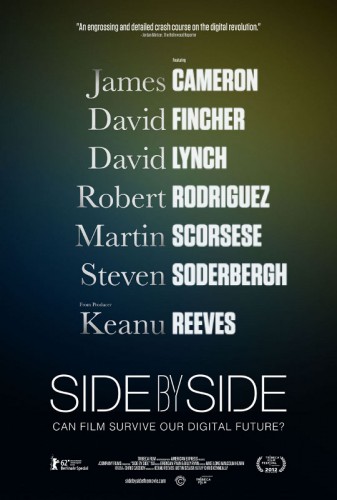
Thanks to Chris Kenneally for his time and to Tribeca Film for setting up the interview. Side by Side is now playing On-Demand and in limited release.
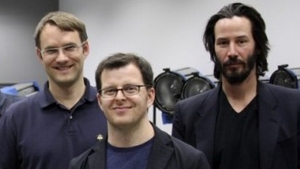
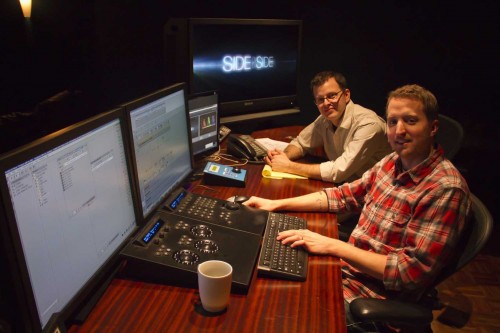
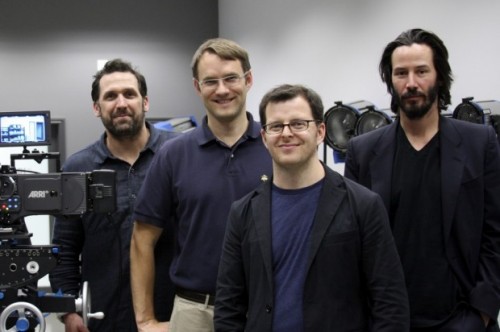

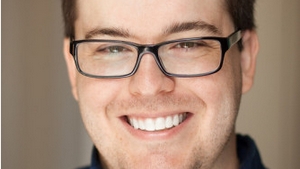
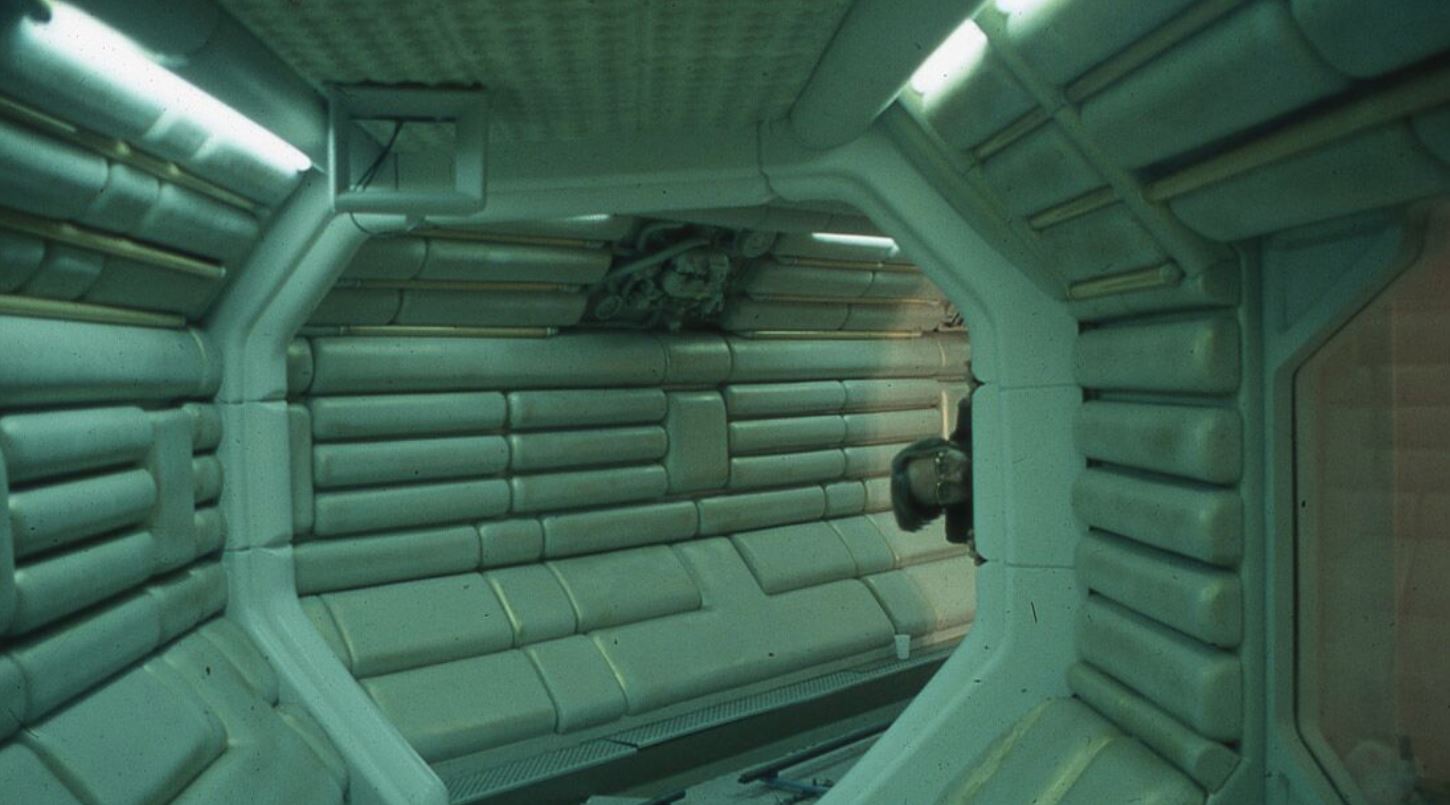
2 Comments
pturner1010
I can’t wit to see this. Interesting to hear about how they handled the logistics. Must have been very exciting as they started getting all the big names attached.
Andrew Crump
I’m with you on this– I’m really curious to see the film now more than ever!